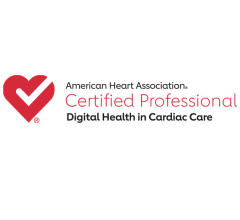“Disruptive innovation” is all the buzz. Repealing the Affordable Care Act (ACA) is so last year. Well, disrupt this: Repeal Medicare and Medicaid and get the government out of the medical care business.
The federal government appropriately began its involvement in health care in 1798 when Congress established the U.S. Marine Hospital Service. It should have ended with taking care of our soldiers and sailors.
This is America, and the private sector knew what to do. The mid-1800s brought “sickness funds,” financed by small wage deductions. In the late 1800s, mining, lumber and railroad companies created industrial clinic plans that prepaid physicians a fixed monthly fee to provide medical care to employees. Workers were so satisfied with these that they rejected the idea of state-sponsored compulsory insurance.
To guarantee payment in the midst of the Great Depression, pre-paid group plans were established. Hospital and surgical insurance featuring physician choice and fee-for-service payment was introduced in the 1930s. Government policies in the 1940s influenced the growth of employer-sponsored health insurance. Favorable tax treatment and World War II’s wage and price controls led employers to offer health insurance in lieu of higher wages.
The poor were not forgotten. Charity hospitals developed from almshouses that cared for the poor. Public hospitals grew from community efforts to care for those who could not afford to care for themselves.
By 1964, some 80 percent of Americans were privately insured with 821 companies offering individual plans. Health insurance was an affordable safety net because most people are healthy most of the time and people took care of their simple medical needs out of pocket. The challenge was insuring the poor-risk top 5 percent of health consumers who spend half of the medical dollars. The government could have — but did not — use the opportunity to encourage the private sector to innovate practical, cost-effective insurance products and launch public education campaigns to invigorate community public hospitals.
Unfortunately, the Sixties brought us far more than flower power. After an uphill battle fighting images of wizened widows without medical care, the Kerr-Mills Act of 1960 giving federal funding to the states to help low-income seniors with their medical bills was passed. This opened the door to a bureaucratic monster that took on a life of its own.
The Great Society’s social engineers would not be satisfied until the government burrowed deeper into medical care. Thus Medicaid for all the “medically indigent” and Medicare for all seniors (aka middle class welfare) were born.
And since money grows on third-party and government trees, medical costs were ignored, and expenditures dramatically increased from 5 percent of gross domestic product (GDP) in 1960 to 17.9 percent in 2016. And at 28 percent, healthcare expenditures are the single largest piece of the federal budget pie.
The ACA’s justification for commandeering the remainder of the health insurance market was to rid our nation of the uninsured. Yet six years later, the nation’s uninsured dropped a mere 3.8 percent, and premiums have more than doubled. The number one reason the current uninsured did not buy insurance was because the cost was too high. Of course it was. The ACA’s mandated “free” benefits had to be paid for somehow. Worse yet, it now takes a Herculean effort to find individual health insurance; nationally, there are only 3.5 issuers in the ACA marketplace.
Medicare and Medicaid began the upending of the health insurance business. These programs became the siren call, enticing us to cede control over our health to disinterested third parties and middlemen. Government largesse led us to accept blind pricing as the norm. Where else do you buy something before you know what it costs? Freebies lured us into relinquishing our privacy to government data banks and now leave us longing for the comfort and simplicity of a computer-free doctor visit.
Medicare and Medicaid started us down the road to dependency and government control. The nightmare has become a reality — when government controls your medical care, it controls your life and death through treatment denials and Medicare’s ever-expanding direct-to-hospice pathway.
In the 50s drama The High and the Mighty, airplane passengers were forced to throw all their baggage into the Pacific Ocean to save themselves from certain doom. Likewise it’s time to shed our government healthcare baggage and move forward.



 November 14, 2025
November 14, 2025 









